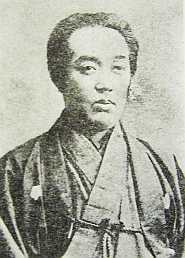Monday, July 28, 2008
Tang Sai'er
Tang Sai'er, native of Shandong, was a leader of the White Lotus Sect during the Ming Dynasty.1 The White Lotus Sect, based on Buddhist beliefs, originated during the preceding Yuan dynasty. It was considered a heretical cult. The cult became a subversive organization involved in uprisings against the government.2
According to The Chronicles of the Reign of Ming Taizhong, Tang Sai'er loved reading the Buddhist Scriptures since a young age. She married a man named Lin San. Tang Sai'er allegedly "called herself 'Holy Mother' and claimed to be a prophetess."3 Tang travelled through many counties, recruiting more than 500 believers.4 She claimed to be a sorceress with the power of commanding gods and demons. In 1420, with a cult following of tens of thousands, Tang Sai'er launched an armed revolt against the government. Her rebel army took a number of cities and counties, including Anzhou, Chanzhou, Jimo and Shouzhou.5
During her battle against government troops, Tang was said to have used her witchcraft to create an airborne army of demons out of paper dolls. After she was finally defeated by government forces led by Liu Sheng and Lin Qing, Sai'er managed to escape, a feat which has been attributed to sorcery.6 The Emperor Chengzu ordered a nationwide search for this notorious fugitive but met with no success. From then on, the White Lotus Sect went underground.7 It continued its activities into the 20th century.8
The character of Tang Sai'er continued to fascinate later generations, inspiring the Qing Dynasty novel "Legend of the Goddess". She also appears in more modern novels.9
http://www.colorq.org/Articles/article.aspx?d=asianwomen&x=tangsaier
Saturday, May 31, 2008
LYRICS "OKIKU"

THESE ARE THE LYRICS IN THE BLACK METAL THROW-DOWN ON THIS TRACK:
"Bancho sara-yashiki"
Okiku wa Aoyama Tessan no ie ni, jochuu to shite hataraite imashita. Aruhi kahou de aru juu-mai no kouka na touki no sara o katazuketeiru toki, Okiku wa ukkari sono sara no ichi-mai o watte shimaimashita. Okotta Aoyama wa Okiku o koroshi, sono shitai o furuido ni nagesutemashita. Sonogo maiban Okiku no yuurei ga ido kara araware, sara o
yukkuri kyuu-mai made kazoeruto, totsuzen hitsuuna susurinaki o hajimeru no deshita. Sore wa nandomo nandomo kurikaesare, Aoyama o kurushimemashita. Tsuini Aoyama wa ki ga kurui, Okiku no fukushuu wa hatasareta no deshita.
"The Story of Okiku" is a famous yuurei story.
Okiku works as a maid at the home of the samurai Tessan Aoyama. One day while cleaning a collection of ten precious ceramic plates, which is a family treasure, she accidentally breaks one of them. The outraged Aoyama kills her and throws the corpse into an old well. Every night afterwards, Okiku's ghost rises from the well, slowly counts out nine plates and then breaks into heartrending sobs, over and over and over again, tormenting the samurai. Finally, vengeance is wrought when Aoyama goes insane.
HOMEWERKZ
女中//jochuu
(maid)
ある日//aruhi
(one day)
家宝//kahou
(family treasure)
かたづける//katazukeru
(to clean)
高価な//koukana
(precious)
陶器の皿//touki no sara
(ceramic plates)
うっかり//ukkari
(accidentally)
割る//waru
(to break)
怒ったokotta
(outraged)
殺す//korosu
(to kill)
投げる//nageru
(to throw)
死体//shitai
(corpse)
古井戸//furuido
(old well)
数える//kazoeru
(to count)
ゆっくり//yukkuri
(slowly)
悲痛な//hitsuuna
(heartrending)
苦しめる//kurushimeru
(to torment)
復讐//fukushuu
(vengeance)
気が狂う//ki ga kuruu
(insane)
Friday, May 23, 2008
YOSHITOSHI TSUKIOKA [月岡 芳年]
Tsukioka Yoshitoshi (1839 - June 9, 1892) (Japanese: 月岡 芳年; also named Taiso Yoshitoshi 大蘇 芳年) was a Japanese artist.
He is widely recognized as the last great master of Ukiyo-e, a type of Japanese woodblock printing. He is additionally regarded as one of the form's greatest innovators. His career spanned two eras - the last years of the old feudal Japan, and the first years of the new modern Japan. Like many Japanese, while interested in the new things from the rest of the world, over time he became increasingly concerned with the loss of many outstanding things from the traditional Japan, among them the traditional woodblock print.
By the end of his career, Yoshitoshi was in an almost single-handed struggle against time and technology. As he worked on in the old manner, Japan was adopting the mass reproduction methods of the West, like photography and lithography. Nonetheless, in a Japan that was turning away from its own past, he almost single-handedly managed to push the traditional Japanese woodblock print to a new level, before it effectively died with him.
His life is perhaps best summed up by John Stevenson:
- Yoshitoshi's courage, vision and force of character gave ukiyo-e another generation of life, and illuminated it with one last burst of glory.
- -- Yoshitoshi's One Hundred Aspects of the Moon, 1992
His reputation has only continued to grow, both in the West, and among younger Japanese, and he is now almost universally recognized as the greatest Japanese artist of his era.






